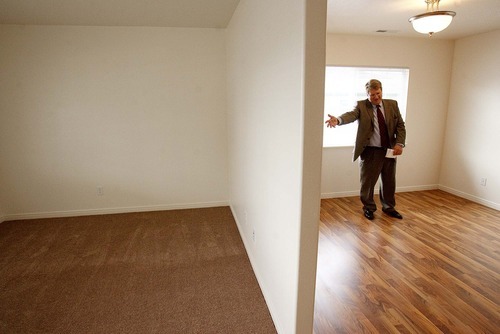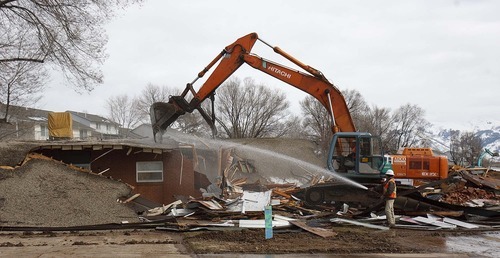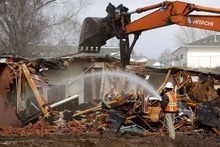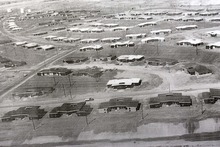This is an archived article that was published on sltrib.com in 2011, and information in the article may be outdated. It is provided only for personal research purposes and may not be reprinted.
Hill Air Force Base • Within 15 minutes, the bulldozer felled the one-level brick structure that had housed countless military families since the 1960s. A small crowd cheered as the swamp cooler tumbled down with the roof.
Those evaporative cooling devices have generated more complaints than any other component of the base's outdated housing, said Col. Patrick Higby, commander of the 75th Air Base Wing.
"The new homes have central air," Higby grinned. Other features include two-car garages, energy-efficient construction, new appliances, open floor plans, electronic data connections, covered porches, irrigated lawns, landscaping and more.
Wednesday's demolition was the 466th and final house-razing at the Layton military installation, part of a privatization effort that Boyer Hill Military Housing (BHMH) expects to conclude by September.
When all the dust settles, BHMH, part of the Salt Lake City-based Boyer Company, will have restored 21 historic units, renovated 562 homes, and constructed 437 new houses — totaling 1,020 welcoming units for military families stationed at Hill.
In 2005, Boyer won the $105.6 million contract for Hill's upgrades, that included a six-year term for renovation and new construction along with a 50-year lease agreement where the company acts as landlord.
According to the U.S. Air Force Center for Engineering and the Environment (AFCEE), about 45 bases nationwide have privatized housing with several others heading in that direction.
In the mid-1990s, more than half of the nation's 104,000 Air Force homes were deemed inadequate, said Nathan Simmons, public affairs specialist for Hill.
Budget constraints limited the Air Force's ability to maintain the old structures. The AFCEE promoted privatization as "the solution to a 25-year, $7 billion problem." However, benefits could extend beyond that bottom line.
"More than homes, we're developing a sense of community," BHMH Construction Manager Rulon Gardner said of the massive project he oversees at Hill.
"Here we are asking them to defend our country," Gardner said, "and their wives are just saying that now they can feel comfortable — they're in a good home, a good environment."
With the improvements, occupancy of Hill's base housing has risen to 97 percent.
As houses were razed, BHMH preserved sidewalks and trees wherever possible. The company has also installed amenities such as parks, pools and splash pads.
Staff Sergeant Jody Bussiere moved into one of the new two-story units in mid-2007. He and wife Stacie have four children, ranging from 8 to 15 years old.
"This is by far the nicest base housing I've lived in," Bussiere said, appreciative of the 2,100 square feet that give his brood room to breathe.
His wife loves to cook and entertain, Bussiere added, and the open floor plan encourages those activities.
While the privatization effort aimed to save Department of Defense dollars, the end product — a more nurturing and efficient environment —could yield higher productivity.
"When you have a nice home to come home to," Bussiere said, "it's easier to focus on your job rather than having to worry about whether your wife has to phone in a bunch of work orders. It gives us peace of mind."











